Opinion & Analysis
10 Unwritten Rules of Golf Etiquette

There is certain etiquette all golfers are taught when first learning to play the game, such as not to step in another person’s line on the green, and not to talk while another person is hitting. Those are the basics, but not what I’m talking about here. There are underlying rules of etiquette; ones that you may never even know existed.
You see, the mind of a golfer is very fragile, and often irrational. It’s understandable, since there’s a constant battle going on inside of it — juggling swing thoughts, demons, highs and lows. At any point a golfer’s patience can snap, and the last thing he or she needs is a push from a playing partner.
When you’re in a group with another golfer, your job is to be respectful, helpful, enjoyable, and sometimes just stay out of the way. You don’t want to unknowingly aggravate a player in your group (unless you’re playing match play, maybe), but that’s another discussion entirely.
Here’s a list of 10 unwritten, unspoken rules of golf etiquette.
Don’t talk to someone else’s golf ball
I know, you’re only being polite. But when golfers spray a shot and it’s heading for the water, you can bet they know it’s heading for the water. They don’t need you yelling at it or begging for it to stay dry. If they want to instruct their golf ball to behave a certain way, leave it up to them.
The last thing you want is for them to say GO as their ball flies toward a fairway bunker, while you’re telling it to SIT… only to see it land in the sand. Awkward.
Your pleads to another’s golf ball can also come across as insincere, or even disrespectful. For example, if the ball is clearly hooking left into the trees, and you yell “spit it!” you’re basically saying that the golfer just hit a shot that needs to get extremely lucky. Surely the player doesn’t need to hear your confirmation that he or she just hit a terrible shot.
It’s their golf ball; they paid for it, they hit it and they know best where it’s going. When in doubt, silence is always the best approach.
If you say “nice shot,” make sure it was a nice shot
“Nice shot” is undoubtedly the most overused compliment in golf, so make sure to at least use it correctly.
Imagine you’re a scratch golfer and your ball is in the fairway about a 100 yards out, your favorite number. The pin is tucked back-right, but you’re eyeing it up and looking to attack in hopes of making birdie. You end up tugging it, and didn’t catch it cleanly either, so you let your hand off the club in disappointment. The ball lands on the front left portion of the green for an outside chance at birdie, and you’re heated. You slam the club back in your bag, upset at the missed opportunity, and another player in the group gives you a half-hearted nice shot.
Now, not only did the compliment go unappreciated, but the scratch golfer may now be thinking, “Are their standards so low of my golf game that they think that’s a nice shot?”
And this goes for any level of golfer. No one wants to hear nice shot when it was below their standards. The point is, compliment a player on hitting a good one, but make sure the player actually agrees with you.
Show some love
On the flip side, if your playing partner is faced with a difficult shot — maybe they need to hit a towering shot over a tree to a green guarded by water — and they pull it off, make sure to say something more than “nice shot.” Especially if you’re the one who said “nice shot” when that same player hit a semi-chunk from 100 yards on the hole before.
Since the mind of a golfer is fragile, it doesn’t hurt to stroke their ego a bit when they hit an amazing shot. The golf clap was invented for this reason.
Don’t ask someone what they had on the hole as soon as they hole out
While it may not seem like a big deal, keeping score can be a lot of pressure. It’s easy to miscount, forget to mark down the scores from a previous hole, or simply mark down the wrong score. Such mistakes can easily lead to a dispute if handled improperly.
Nothing is more irritating to most golfers than having to announce to the group they made a double bogey as soon as their golf ball touches the bottom of the cup, though. If you just saw them three-putt, or you know they hit a ball out of bounds on the hole, don’t ask “What’d you have there?” as soon as they hole out.
Since they’re probably either angry or upset, give them a few minutes to collect themselves before having to confirm they had a terrible hole. And think before you say “nice par,” forgetting about the ball they dunked in the water, because then they have to correct you and say “actually it was a bogey.” It just reaffirms the heartbreak.
No talking during a no-hitter
If you’re a baseball fan, you know that you should never talk to a pitcher who’s throwing a perfect game or no-hitter, as to not disrupt him while he’s “in the zone.”
The same goes for golfers, but it’s even worse. For golfers, zones are particularly fragile, and any mention of performance, swing thoughts or score can be destructive.
So if a golfer just hit the first six fairways of the day, don’t ask something like, “How are you hitting all of these fairways today?” Chances are, they’ll snipe the next tee shot way left. And if they’re clearly playing better than their handicap suggests, they’re either sandbagging, or know exactly how well they’re playing that day. Don’t disturb them by saying, “Hey, you’re playing pretty well today, eh? Is this the best you’ve ever shot?” If it turns out they screw up their potential best round ever, you can bet they’ll be blaming you and your question when the round is over.
Also, don’t ever say this: “Hey, do you know you only need a bogey to break 80. Have you ever broken 80 before?” No they haven’t broken 80 before, and they won’t today because now it’s in their head.
Don’t hit, or even look at someone else’s golf ball
Want to see a golfer completely lose the plot? Walk over to their golf ball, bend over to look at it, then address it with a golf club.
Anyone who has had someone accidentally hit their golf ball knows there’s nothing that makes a golfer angrier. If your golf ball happens to be in the vicinity of someone else’s ball — or if there’s even a chance of it — be extra, extra careful that you’re hitting the correct one. I’ve seen disputes over golf balls turn into fisticuffs.
And, whatever you do, DO NOT hit someone’s golf ball, realize it’s theirs, and then drop the ball back in a worse lie than where you found it. Not even your worst enemy deserves that.
Tell someone if they’re teed up in front of the tee markers
Don’t wait until after they’ve hit the shot to tell them their ball was in front of the tee markers. If you noticed it, that means you noticed before they hit the ball, or else you wouldn’t have been able to tell. Don’t put another golfer in that awkward position, because there’s only two ways of dealing with it:
- They take the stroke and re-tee, in which case they’re fuming because you could have saved them the stroke.
- You agree to let it go, but then the player feels bad and can’t concentrate the rest of the round knowing it wasn’t completely by the rules.
Golf is a game of sportsmanship, and you should never want another player to incur a penalty. Even if you’re playing against them, calling penalties that you could have saved from happening is a sure way to make enemies in the game.
Wait until the clubhouse to pay
I know it hurts when you’ve lost a money match, and you want to get the payment over as soon as possible, but on the 18th green in front of an audience is NOT the right time to do so.
You need to be sensitive to the fact that some people are uncomfortable advertising that they gamble on the golf course, and others are even more uncomfortable with people knowing they won. Wait until you’re in a more private setting to settle your bets. If they want to then brag to their friends or fellow members, that’s their right.
Take your ball out of the hole before someone else putts
There’s something poetic about the sound of the golf ball rolling around in the bottom of the cup. It’s confirmation that you’ve successfully completed your goal of making the putt, and your award for finishing the hole.
There are only 18 opportunities to hear that sound during a round, so don’t rob your playing partner of any of them.
Plus, you don’t want your playing partner thinking about your golf ball that’s sitting in the bottom of the cup, rather than concentrating on what he or she needs to do on the green. Maybe you’re just trying to speed up play or not get in the way of the other player, but it’s never wrong to just hurry up and grab your ball out of the hole.
Seek instruction, but make sure it’s timed correctly
There’s not a golfer on the planet who will refuse to give advice to a player seeking assistance with their game. Even on the PGA Tour, where golfers compete against each other for seven-figure paychecks, players give each other pointers when asked.
That being said, right after someone hits a shot that spins violently off the front of the green is NOT the correct time to ask, “How do you get the ball to spin back like that?” If the ball spins off the green, I can guarantee they weren’t trying to do that. And if they duck hook a ball into someone’s backyard, that simply isn’t the right time to ask, “How do you make the ball draw like that?”
There’s a time and place for instruction; just make sure it’s not when your playing partner is ready to snap their club in half.
Inspired by Assistant PGA Professional Steven Westphal
- LIKE786
- LEGIT132
- WOW25
- LOL49
- IDHT13
- FLOP36
- OB21
- SHANK243
Opinion & Analysis
Ryan: Why the race to get better at golf might be doing more harm than good

B.F. Skinner was one of the most important psychologists of the 20th century, developing the foundation of the development of reinforcement, and in doing so, creating the concept of behaviorism. In simple terms, this means that we are conditioned by our habits. In practical terms, it explains the divide between the few and far between elite instructors and college coaches.
To understand the application, let’s quickly review one of B.F. Skinner’s most important experiments; superstitions in the formation of behavior by pigeons. In this experiment, food was dispensed to pigeons at random intervals. Soon, according to Skinner, the pigeons began to associate whatever action they were doing at the time of the food being dispensed. According to Skinner, this conditioned that response and soon, they simply haphazardly repeated the action, failing to distinguish between cause and correlation (and in the meantime, looking really funny!).
Now, this is simply the best way to describe the actions of most every women’s college golf coach and too many instructors in America. They see something work, get positive feedback and then become conditioned to give the feedback, more and more, regardless of if it works (this is also why tips from your buddies never work!).
Go to a college event, particularly a women’s one, and you will see coaches running all over the place. Like the pigeons in the experiment, they have been conditioned into a codependent relationship with their players in which they believe their words and actions, can transform a round of golf. It is simply hilarious while being equally perturbing
In junior golf, it’s everywhere. Junior golf academies make a living selling parents that a hysterical coach and over-coaching are essential ingredients in your child’s success.
Let’s be clear, no one of any intellect has any real interest in golf — because it’s not that interesting. The people left, including most coaches and instructors, carve out a small fiefdom, usually on the corner of the range, where they use the illusion of competency to pray on people. In simple terms, they baffle people with the bullshit of pseudo-science that they can make you better, after just one more lesson.
The reality is that life is an impromptu game. The world of golf, business, and school have a message that the goal is being right. This, of course, is bad advice, being right in your own mind is easy, trying to push your ideas on others is hard. As a result, it is not surprising that the divorce rate among golf professionals and their instructors is 100 percent. The transfer rate among college players continues to soar, and too many courses have a guy peddling nefarious science to good people. In fact, we do at my course!
The question is, what impact does all this have on college-age and younger kids? At this point, we honestly don’t know. However, I am going to go out on a limb and say it isn’t good.
Soren Kierkegaard once quipped “I saw it for what it is, and I laughed.” The actions of most coaches and instructors in America are laughable. The problem is that I am not laughing because they are doing damage to kids, as well as driving good people away from this game.
The fact is that golfers don’t need more tips, secrets, or lessons. They need to be presented with a better understanding of the key elements of golf. With this understanding, they can then start to frame which information makes sense and what doesn’t. This will emancipate them and allow them to take charge of their own development.
- LIKE9
- LEGIT3
- WOW1
- LOL1
- IDHT0
- FLOP0
- OB0
- SHANK5
19th Hole
Vincenzi’s 2024 Valspar Championship betting preview: Elite ballstrikers to thrive at Copperhead
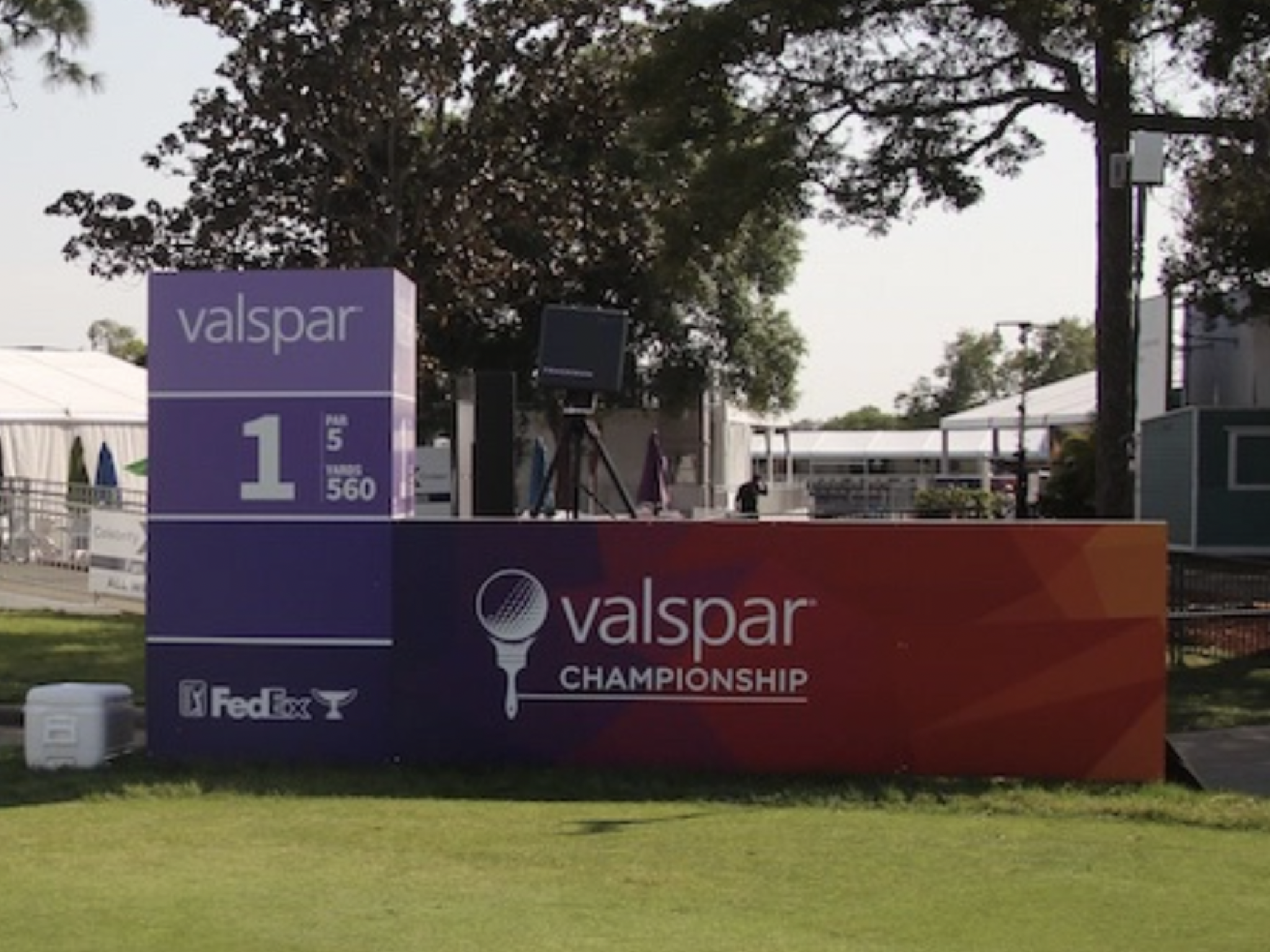
The PGA TOUR will stay in Florida this week for the 2024 Valspar Championship.
The Copperhead Course at Innisbrook Resort is a par 71 measuring 7,340 yards and features Bermudagrass greens overseeded with POA. Infamous for its difficulty, the track will be a tough test for golfers as trouble lurks all over the place. Holes 16, 17 and 18 — also known as the “Snake Pit” — make up one of the toughest three-hole stretches in golf and should lead to a captivating finish on Sunday.
The field is comprised of 156 golfers teeing it up. The field this week is solid and is a major improvement over last year’s field that felt the impact of players skipping due to a handful of “signature events” in a short span of time.
Past Winners at Valspar Championship
- 2023: Taylor Moore (-10)
- 2022: Sam Burns (-17)
- 2021: Sam Burns (-17)
- 2019: Paul Casey (-8)
- 2018: Paul Casey (-10)
- 2017: Adam Hadwin (-14)
- 2016: Charl Schwartzel (-7)
- 2015: Jordan Spieth (-10)
In this article and going forward, I’ll be using the Rabbit Hole by Betsperts Golf data engine to develop my custom model. If you want to build your own model or check out all of the detailed stats, you can sign up using promo code: MATTVIN for 25% off any subscription package (yearly is best value).
Key Stats For Copperhead
1. Strokes Gained: Approach
Strokes Gained: Approach grades out as the most important statistic once again this week. Copperhead really can’t be overpowered and is a second-shot golf course.
Total SG: Approach Over Past 24 Rounds (per round)
- Tony Finau (+.90)
- Nick Taylor (+.81)
- Justin Thomas (+.77)
- Greyson Sigg (+.69)
- Christiaan Bezuidenhout (+.67)
2. Good Drive %
The long hitters can be a bit limited here due to the tree-lined fairways and penal rough. Playing from the fairways will be important, but laying back too far will cause some difficult approaches with firm greens that may not hold shots from long irons.
Golfers who have a good balance of distance and accuracy have the best chance this week.
Good Drive % Over Past 24 Rounds
- Brice Garnett (+91.3%)
- Zach Johnson (+91.1%)
- Sam Ryder (+90.5%)
- Ryan Moore (+90.4%)
- Aaron Rai (+89.7%)
3. Strokes Gained: Ball Striking
Adding ball-striking puts even more of a premium on tee-to-green prowess in the statistical model this week. Golfers who rank highly in ball-striking are in total control of the golf ball which is exceedingly important at Copperhead.
SG: Ball Striking Over Past 24 Rounds:
- Xander Schauffele (+1.32)
- Keith Mitchell (+1.29)
- Tony Finau (+1.24)
- Cameron Young (+1.17)
- Doug Ghim (+.95)
4. Bogey Avoidance
With the conditions likely to be difficult, avoiding bogeys will be crucial this week. In a challenging event like the Valspar, oftentimes the golfer who is best at avoiding mistakes ends up on top.
Gritty golfers who can grind out difficult pars have a much better chance in an event like this than a low-scoring birdie-fest.
Bogey Avoidance Over Past 24 Rounds
- Brice Garnett (+9.0)
- Xander Schauffele (+9.3)
- Austin Cook (+9.7)
- Chesson Hadley (+10.0)
- Greyson Sigg (+10.2)
5. Strokes Gained: Total in Difficult Conditions
Conditions will be tough this week at Copperhead. I am looking for golfers who can rise to the occasion if the course plays as difficult as it has in the past.
Strokes Gained: Total in Difficult Conditions Over Past 24 rounds
- Xander Schauffele (+1,71)
- Min Woo Lee (+1.39)
- Cameron Young (+1.27)
- Jordan Spieth (+1.08)
- Justin Suh (+.94)
6. Course History
That statistic will tell us which players have played well at Copperhead in the past.
Course History Over Past 24 rounds
- Patrick Cantlay (+3.75)
- Sam Burns (+2.49)
- Davis Riley (+2.33)
- Matt NeSmith (+2.22)
- Jordan Spieth (+2.04)
The Valspar Championship Model Rankings
Below, I’ve compiled overall model rankings using a combination of the five key statistical categories previously discussed — SG: Approach (27%), Good Drive % (15%), SG: BS (20%), Bogeys Avoided (13%), Course History (13%) Strokes Gained: Total in Difficult Conditions (12%).
- Xander Schauffele
- Doug Ghim
- Victor Perez
- Greyson Sigg
- Ryan Moore
- Tony Finau
- Justin Thomas
- Sam Ryder
- Sam Burns
- Lucas Glover
2024 Valspar Championship Picks
Justin Thomas +1400 (DraftKings)
Justin Thomas will be disappointed with his finish at last week’s PLAYERS Championship, as the past champion missed the cut despite being in some decent form heading into the event. Despite the missed cut, JT hit the ball really well. In his two rounds, the two-time major champion led the field in Strokes Gained: Approach per round.
Thomas has been up and down this season. He’s missed the cut in two “signature events” but also has finishes of T12 at the Arnold Palmer Invitational, T12 at the Waste Management Phoenix Open, T6 at the Pebble Beach AT&T Pro-Am and T3 at the American Express. In his past 24 rounds, he ranks 3rd in the field in Strokes Gained: Approach and 6th in Strokes Gained: Ball Striking in the field.
Thomas loves Copperhead. In his last three tries at the course, he’s finished T13, T3 and T10. Thomas would have loved to get a win at a big event early in the season, but avoidable mistakes and a balky putter have cost him dearly. I believe a trip to a course he loves in a field he should be able to capitalize on is the right recipe for JT to right the ship.
Christiaan Bezuidenhout +6000 (FanDuel)
Christiaan Bezuidenhout is playing spectacular golf in the 2024 season. He finished 2nd at the American Express, T20 at Pebble Beach and T24 at the Genesis Invitational before finishing T13 at last week’s PLAYERS Championship.
In his past 24 rounds, the South African ranks 3rd in the field in Strokes Gained: Approach and 26th in Strokes Gained: Ball Striking. Bezuidenhout managed to work his way around TPC Sawgrass last week with minimal damage. He only made five bogeys in the entire week, which is a great sign heading into a difficult Copperhead this week.
Bezuidenhout is winless in his PGA Tour career, but certainly has the talent to win on Tour. His recent iron play tells me that this week could be a breakthrough for the 35-year-old who has eyes on the President’s Cup.
Doug Ghim +8000 (FanDuel)
Doug Ghim has finished in the top-16 of his past five starts. Most recently, Ghim finished T16 at The PLAYERS Championship in a loaded field.
In his past 24 rounds, Ghim ranks 8th in Strokes Gained: Approach and 5th in Strokes Gained: Ball Striking. In terms of his fit for Copperhead, the 27-year-old ranks 12th in Bogey Avoidance and 7th in Strokes Gained: Total in Difficult Conditions, making him a great fit for the course.
Ghim has yet to win on Tour, but at one point he was the top ranked Amateur golfer in the world and played in the 2017 Arnold Palmer Cup and 2017 Walker Cup. He then won the Ben Hogan award for the best male college golfer in 2018. He certainly has the talent, and there are signals aplenty that his talent in ready to take him to the winner’s circle on the PGA Tour.
Sepp Straka +8000 (BetRivers)
Sepp Straka is a player who’s shown he has the type of game that can translate to a difficult Florida golf course. The former Presidents Cup participant won the 2022 Honda Classic in tough conditions and should thrive with a similar test at Copperhead.
It’s been a slow 2024 for Straka, but his performance last week at the PLAYERS Championship surely provides some optimism. He gained 5.4 strokes on approach as well as 1.88 strokes off the tee. The tee-to-green game Straka showed on a course with plenty of danger demonstrates that he can stay in control of his golf ball this week.
It’s possible that the strong performance last week was an outlier, but I’m willing to bet on a proven winner in a weaker field at a great number.
Victor Perez +12000 (FanDuel)
Victor Perez is no stranger to success in professional golf. The Frenchman has three DP World Tour wins including a Rolex Series event. He won the 2019 Alfred Dunhill Links Championship, as well as the 2023 Abu Dhabi HSBC Championship, which are some big events.
Perez earned his PGA Tour card this season and enters the week playing some fantastic golf. He finished in a tie for 16th in Florida at the Cognizant Classic and then tied for third in his most recent start at the Puerto Rico Open.
In his past 24 rounds in the field, Perez ranks 11th in Strokes Gained: Approach, 1oth in Strokes Gained: Ball Striking, 6th in Good Drive % and 15th in Bogey Avoidance.
Perez comes in as a perfect fit for Copperhead and offers serious value at triple-digit odds.
- LIKE16
- LEGIT3
- WOW2
- LOL1
- IDHT0
- FLOP1
- OB2
- SHANK6
Opinion & Analysis
Myrtle Beach, Explored: February in South Carolina

As I gain in experience and age, and familiarity breeds neither contempt nor disdain, I understand why people return to a place. A destination like Myrtle Beach offers a sizable supply and diversity of restaurants, entertainment venues, and shops that are predicated on the tenets of the service industry. Greet your customers with a smile and a kind word, and they will find comfort and assurance. Provide them with a memorable experience and they will suggest your place of business to others.
My first tour of Myrtle Beach took place in the mid-1980s, and consisted of one course: Gator Hole. I don’t remember much from that day, and since Gator Hole closed a decade later, I cannot revisit it to recollect what I’d lost. Since then, I’ve come to the Grand Strand a few times, and been fortunate to never place a course more than once. I’ve seen the Strantz courses to the south and dipped my toe in the North Carolina courses of Calabash. I’ve been to many in the middle, including Dunes, Pine Lakes, Grande Dunes among them.
2024 brought a quartet of new courses, including two at the Barefoot Resort. I’d heard about the North Myrtle Beach four-pack of courses that highlight the Barefoot property, including layouts from Pete Dye, Tom Fazio, Davis Love III, and Greg Norman. I had the opportunity to play and shoot the Dye and Fazio tracks, which means that I’ll have to return to see the other two. Sandwiched between them were the TPC-Myrtle Beach course, also from Tom Fazio, and the Pawley’s Plantation trace, by the hand of Jack Nicklaus. I anticipated a bit of the heroic, and bit of the strategic, and plenty of eye candy. None of those architects would ever be considered a minimalist, so there would be plenty of in-play and out-of-play bunkers and mounds to tantalize the senses.
My nephew arrived a few days early, to screen a few more courses. As a result, you the reader will have an extra quarter of mini-reviews, bringing the total of courses in this piece to eight. It was inconceivable that CJR would play four courses that I had never played nor photographed, but that was the case. His words appear at the end of this piece. We hope that you enjoy the tour.
Main Feature: Two Barefoots, a TPC, and Pawley’s Plantation
What Paul “Pete” Dye brought back from his trips to the United Kingdom, hearkened back to what C.B. MacDonal did, some 65 years prior. There is a way of finding bunkers and fairways, and even green sites, that does not require major industrial work. The Dye course at Barefoot Resorts takes you on a journey over the rumpled terrain of distant places. If there’s one element missing, it’s the creased and turbulent fairways, so often found in England and Ireland. The one tenet of playing a Dye course, is to always aim away from temptation, from where your eyes draw you. Find the safe side of the target, and you’ll probably find your ball. It then stands that you will have a shot for your next attempt. Cut the corner, and you might have need to reload. The Barefoot course begins gently, in terms of distance, but challenges with visual deception. After two brief 4s and a 3, the real work begins. The course is exposed enough, to allow the coastal winds to dance along the fairways. Be ready to keep the ball low and take an extra club or two.
If memory serves, TPCMB is my first trek around a TPC-branded course. It had all the trappings of a tour course, from the welcome, through the clubhouse, to the practice facilities and, of course, the course. TPC-Myrtle Beach is a Tom Fazio design, and if you never visit Augusta National, you’ll now have an idea of what it is like. You play Augusta’s 16th hole twice at TPCMB, and you enjoy it both times. Fazio really likes the pond-left, green-angle-around par three hole, and his two iterations of it are memorable.
You’ll also see those Augusta bunkers, the ones with the manicured edges that drop into a modestly-circular form. What distinguishes these sand pits is the manner in which they rise from the surrounding ground. They are unique in that they don’t resemble the geometric bunkering of a Seth Raynor, nor the organic pits found in origin courses. They are built, make no mistake, and recovery from them is manageable for all levels of bunker wizardry.
If you have the opportunity to play the two Tom Fazio courses back to back, you’ll notice a marked difference in styling. Let me digress for a moment, then circle back with an explanation. It was written that the NLE World Woods course designed by Fazio, Pine Barrens, was an homage to Pine Valley, the legendary, New Jersey club where Fazio is both a member and the architect on retainer. The Pine Barrens course was plowed under in 2022, so the homage no longer exists. At least, I didn’t think that it existed, until I played his Barefoot Resort course in North Myrtle Beach.
Pine Valley might be described as an aesthetic of scrub and sand. There are mighty, forced carries to travers, along with sempiternal, sandy lairs to avoid. Barefoot Fazio is quite similar. If you’re not faced with a forced carry, you’ll certainly contend with a fairway border or greenside necklace of sand. When you reach the 13th tee, you’ll face a drive into a fairway, and you might see a distant green, with a notable absence: flagstick. The 13th is the icing on the homage cake, a callout of the 8th hole at Pine Valley. Numero Ocho at the OG has two greens, side by side, and they change the manner in which the hole plays (so they say.) At Barefoot Fazio, the right-side green is a traditional approach, with an unimpeded run of fairway to putting surface. The left-side green (the one that I was fortunate to play) demands a pitch shot over a wasteland. It’s a fitting tribute for the rest of us to play.
Be certain to parrot the starter, Leon’s, advice, and play up a deck of tees. Barefoot Fazio offers five par-three holes, so the fours and fives play that much longer. Remember, too, that you are on vacation. Why not treat yourself to some birdie looks?
The Jack Nicklaus course at Pawley’s Plantation emerged from a period of hibernation in 2024. The greens were torn up and their original contours were restored. Work was overseen by Troy Vincent, a member of the Nicklaus Architecture team. In addition, the putting corridors were reseeded with a hardier, dwarf bermuda that has experienced great success, all along the Grand Strand that is Myrtle Beach.
My visit allowed me to see the inward half first, and I understand why the resort wishes to conclude your day on those holes. The front nine of Pawley’s Plantation works its way through familiar, low country trees and wetlands. The back nine begins in similar fashion, then makes its way east, toward the marsh that separates mainland from Pawley’s Island. Recalling the powerful sun of that Wednesday morning, any round beginning on the second nine would face collateral damage from the warming star. Much better to hit holes 11 to close when the sun is higher in the sky.
The marshland holes (12 through 17) are spectacular in their raw, unprotected nature. The winds off the Atlantic are unrelenting and unforgiving, and the twin, par-three holes will remain in your memory banks for time’s march. In typical Golden Bear fashion, a majority of his putting targets are smallish in nature, reflecting his appreciation for accurate approach shots. Be sure to find the forgiving side of each green, and err to that portion. You’ll be grateful.
Bonus Coverage: Myrtlewood, Beechwood, Arrowhead, and King’s North
Arrowhead (Raymond Floyd and Tom Jackson)
A course built in the middle of a community, water threatens on most every hole. The Cypress 9 provides a few holes forcing a carried drive then challenge you with water surrounding the green. On Waterway, a drivable 2nd hole will tempt most, so make sure the group ahead has cleared the green.
Myrtlewood (Edmund Alt and Arthur Hills) and Beechwood (Gene Hamm)
A middle of the winter New Englander’s paradise. Wide open fairways, zero blind shots and light rough allow for shaking off the rust and plenty of forgiveness. A plethora of dog legs cause one to be cautious with every tee shot. Won’t break the bank nor the scorecard.
King’s North @ Myrtle Beach National (Arnold Palmer)
- LIKE2
- LEGIT0
- WOW0
- LOL0
- IDHT0
- FLOP1
- OB0
- SHANK1
-

 Whats in the Bag3 weeks ago
Whats in the Bag3 weeks agoScottie Scheffler WITB 2024 (March)
-
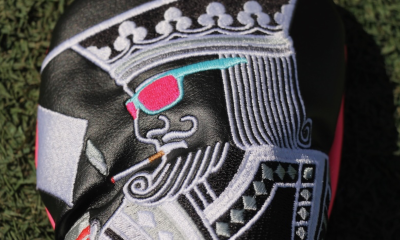
 Tour Photo Galleries3 weeks ago
Tour Photo Galleries3 weeks agoPhotos from the 2024 Arnold Palmer Invitational
-

 19th Hole3 weeks ago
19th Hole3 weeks agoJoaquin Niemann names 3 PGA Tour events he’d love to play each year ‘in a perfect world’
-

 19th Hole3 weeks ago
19th Hole3 weeks ago‘Seems suspect’ – PGA Tour pro hits out at decision to hand Adam Scott and Webb Simpson Bay Hill sponsor exemptions
-

 Equipment3 weeks ago
Equipment3 weeks agoSpotted: Bettinardi irons at the Arnold Palmer Invitational
-

 19th Hole2 weeks ago
19th Hole2 weeks agoPaulina Gretzky opens up on receiving death threats following DJ’s move to LIV Golf
-

 19th Hole3 weeks ago
19th Hole3 weeks agoVincenzi’s 2024 Arnold Palmer Invitational betting preview: Big names ready to pounce at Bay Hill
-

 19th Hole3 weeks ago
19th Hole3 weeks agoVincenzi’s LIV Golf Hong Kong betting preview: Trio of major champs primed for big week






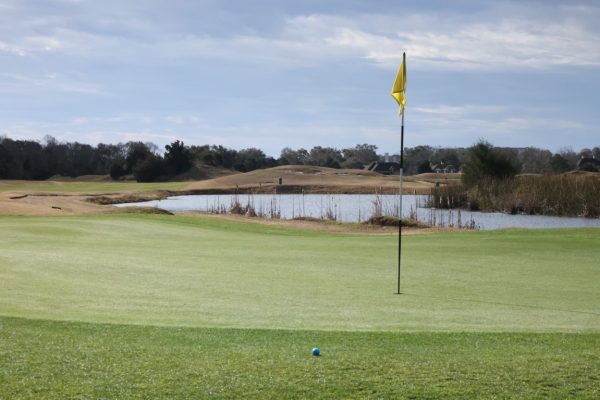













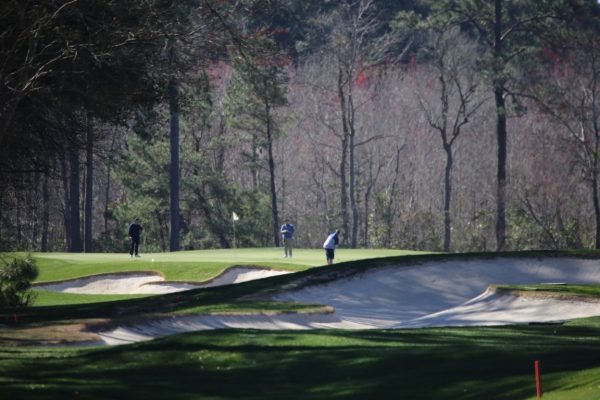

















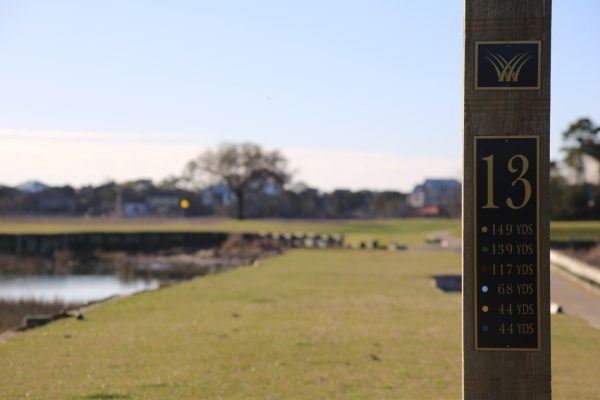

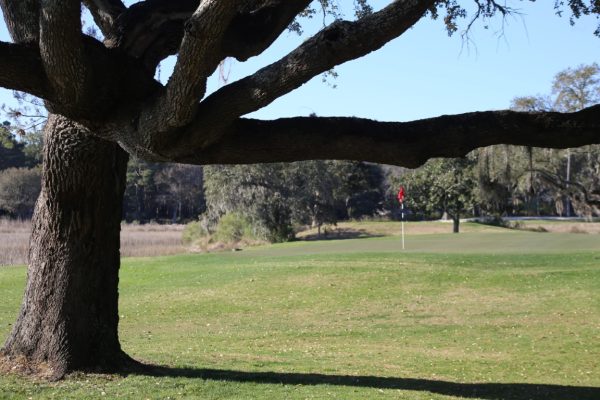



















Pingback: Tee It Up With Rock Bottom Golf - Unwritten Rules - Golf Blog
Randy Chorvack
Sep 13, 2019 at 12:13 pm
I love how you said to make sure that if you say nice shot you use it correctly as not to sound sarcastic. It’s very rude to give somebody condescending praise, especially if they’re trying their hardest. It can even be seen as discouraging, which I’m sure would be the opposite of your intention.
Mmmmm
Jul 27, 2016 at 12:14 pm
The fact that you called it “Rules of” Etiquette tells me you should quit this game and get off the golf course and leave us alone, because you don’t understand golf in any way whatsoever
Scooter
Jul 24, 2016 at 10:31 pm
I’ve played with folks who miss a putt and immediately rake the ball back to re-try or drop another ball to re-try … before I’ve hit my first putt … very uncool
Suncoast 9
Jul 23, 2016 at 11:41 pm
1. Pull that short tee out of the ground after teeing off on a par three or short par four.
2. If someone says nice shot when you know it wasn’t, just smile and say thank you.
Double Mocha Man
Jul 24, 2016 at 3:42 pm
Hey, I like that short tee left there. I use it if it’s on the correct side of the tee box.
Double Mocha Man
Jul 24, 2016 at 7:31 pm
In front or in back of the markers… it’s gotta fit the club’s distance. Why let a silly thing like a tee marker interfere? I have actually moved them before… if I can’t get a level stance. Folks, do you know who places the tee markers?! Some hard-working 2nd string greenskeeper grunt who has never played a round of golf in his life. He mowed the tee and was told to place the tee markers in a new position. Bless his heart… what does he know.
Double Mocha Man
Jul 24, 2016 at 7:40 pm
Ah, my bad. We all thought the PGA and the USGA came in to our little public course and professionally placed those tee markers. I used to think that, too.
Jack
Aug 2, 2016 at 5:15 am
I got annoyed at a guy that kept saying nice shot when I hit it OB. I told him about it and he stopped. Communication is the proper etiquette. But what bugs me most is the unsolicited swing advice. It’s like WTH, you really think I’m going to get better immediately? Especially when it’s coming from a high handicapper who has no clue what he’s doing.
Sam
Jul 23, 2016 at 2:22 am
First hole of a big tourny i was nervous and chipped on from near the green and 3 putted.My scorer said ‘ your short game is really bad’
I became mad.
Grizz01
Jul 22, 2016 at 11:05 pm
And this, is how you get into your opponets head.
Bert
Jul 22, 2016 at 9:02 pm
Not sure your opening comment is correct; seems like new players to the game know very little about anything except what they may see on TV.
“There is certain etiquette all golfers are taught when first learning to play the game, such as not to step in another person’s line on the green, and not to talk while another person is hitting. Those are the basics,”
Who teaches them?
Double Mocha Man
Jul 22, 2016 at 9:38 pm
Always remember to shout, “Get in the hole!” or “Mashed potatoes.” when a member of your group hits.
Nils Nelson
Jul 22, 2016 at 8:49 pm
Regardless of your on-course experience, read THE GOLFER’S CODE, by David Gould. (Thank you for speaking up, Mr. Montesano.)
Joey5Picks
Jul 22, 2016 at 7:40 pm
Regarding #9: Was playing with friends once. On a par 3 friend #1 hits his tee shot and as soon as it’s in the air friend #2 says “Nice shot!”. The ball flies the green and goes into the junk. Friend #2 immediately says “oh, never mind.”
Don’t say “nice shot” until the ball comes to rest.
Tom
Jul 23, 2016 at 1:21 pm
and there ya have it…thumbs up joey..
acemandrake
Jul 22, 2016 at 6:49 pm
“Maybe you’re just trying to speed up play or not get in the way of the other player, but it’s wrong to just hurry up and grab your ball out of the hole.”
??? Am I reading this correctly? Didn’t he say to take our ball out of the hole before the next player putts?
What’s wrong with me?
Brian
Jul 22, 2016 at 10:40 pm
Nah, you read it the same way I did. I believe it’s a typo.
Double Mocha Man
Jul 22, 2016 at 5:16 pm
#7. I like to keep my own score. I do it by tracking how many over par I am… on rare occasion how many under. I dislike it when someone else insists on keeping my score. A while back I resorted to telling outright lies to “Mr. Scorekeeper”. I’d say, “Par.” He’d say, “I had you for a bogey.” Well, if you’re counting my strokes why friggin’ ask me?!
KK
Jul 22, 2016 at 7:08 pm
That’s kind of the rule of golf, bro. It appears your own naivete is the root cause of your problem. Read up.
Double Mocha Man
Jul 22, 2016 at 9:06 pm
KK… Tell me again what’s naive about keeping my own score.
Uncleyianni
Jul 23, 2016 at 6:44 am
You both keep score to be there to fix each other’s mistakes. As a kind of back up for each other.
Dad
Jul 23, 2016 at 4:50 pm
Makes it easier to cheat. Even though I’m SURE you’re a great guy, there’s a reason partners keep score in golf
Bob Castelline
Jul 22, 2016 at 4:37 pm
#11 — No such thing at “ready golf” when you’re on the tee
You gotta hate the guy who strides arrogantly up to the tee ahead of you, despite the fact that he just made double to your par. “Ready golf,” he says as you stand there dumbfounded, driver in hand, ready to play.
Ready golf is not for the tee, dude.
Double Mocha Man
Jul 22, 2016 at 4:46 pm
Ready golf is for the tee if you’re not ready. Also, first one to the 19th hole buys… ready drinks.
Bob Castelline
Jul 22, 2016 at 4:54 pm
OK, right. But I just said, “as you stand there dumbfounded, driver in hand, ready to play.” Definitely agree on the 19th hole rule.
Double Mocha Man
Jul 22, 2016 at 5:00 pm
Since you said you were ready, I understand. I owe you a gin & tonic. In the groups I play with we only give tee honors to a guy if he just made birdie or better… then we’ll suck it up and wait.
Double Mocha Man
Jul 22, 2016 at 5:37 pm
If I’m playing in a strange group I’ll usually wait to see how they play it, or I ask or I just score the lowest so I have the honors anyway. 😉
Double Mocha Man
Jul 22, 2016 at 5:02 pm
Agreed. If you want tee honors get your butt up on the tee.
Bob Castelline
Jul 22, 2016 at 5:05 pm
Perhaps you missed the part where I wrote, “Driver in hand, ready to play.”
FWIW, I don’t do any of that crap you just described. So no, you’re not right. Consider getting your psychic gyro calibrated.
ooffa
Jul 22, 2016 at 5:39 pm
Hey Smiz, Bob is lying. He does all those things. You Rock Smiz.
Double Mocha Man
Jul 22, 2016 at 5:48 pm
Smizter… I’m with Bob. I think he was a half step late to the tee box ’cause he was kind enough to put the flag back in the hole.
And go easy on Ferguson… I grew up there as a kid. One black in my graduating class of over 300. Sneaked onto many a private country club there… Norwood Hills, Normandie, Glen Echo.
Brian
Jul 23, 2016 at 1:23 am
You are the absolute worst person on the Internet.
Brian
Jul 25, 2016 at 1:11 pm
You’ll call it a cesspool, but you won’t look into extenuating circumstances that create the “cesspool.” You’re more than happy to point out the bad, but not willing to understand how it became the way it did. Systemic racism, under-employment and/or abject poverty due to systemic racism, fathers not being fathers, mothers not being mothers, and on and on and on.
Honestly, you could point to just about any low-income area in the U.S. and find similar traits. It’s not just Ferguson, (I’ll go ahead and say it, because it seems like everyone’s afraid to) it’s not just black people, but as long as you enjoy continuing to paint that picture, it’ll never change. We could all, myself included, use a nice step back and exercise some empathy every now and again.
KK
Jul 22, 2016 at 7:16 pm
Golf is too long as is and is killing the game. No one has the time for wait for you to prance on up to the tee.
Patricknorm
Jul 22, 2016 at 3:55 pm
I play a lot of tournaments and for those who do, you know making a four footer for par ( or even a tricky 3 footer) is a skill. Most non tournament matches I play, I putt out. Occasionally I’ll play with a group who has the habit of ” giving me” those 3-4 footers. I’ll politely explain that this is the only opportunity outside of a tournament to have to make them.
Also, I hate when players stand behind you when you putt to see your line. This happens occasionally even in tournaments and even then I have to request that I not be able to see them in my backswing. Of course when I play with better players this is never an issue.
I’m only a 7 handicap but it’s never easy scoring unless I putt well. I’ll admit to some minor anal retentive behaviour on this issue. Good article .
Double Mocha Man
Jul 22, 2016 at 4:50 pm
I love the guys who give themselves 6 foot gimmes. They swipe at them backhanded or while walking. I called a buddy on that once and challenged him to putt out every hole. He didn’t make anything under 4 feet. Next round I relented and let him go back to giving himself putts. He was much happier once again.
Scooter McGavin
Jul 22, 2016 at 3:28 pm
Ugh. Such pretentious, whiny crap. Stop asking everyone to walk on eggshells around you because of your “fragile” ego. Be an adult for Christ’s sake.
Justin
Jul 22, 2016 at 4:13 pm
Completely agree! These rules are fine if you play on the PGA tour, but they are part of the reason why some people stay away from golf. If you play with anyone who does any of these things and you don’t like it, just don’t play with them anymore! It’s really that simple!! If you can’t handle me talking to your ball and you think it’s affecting your game, that’s on you. I shouldn’t have to change the way I play so you can play better. I’m a good golfer who grew up in a “country club” and know all the proper etiquette that some do not. Just because they didn’t grow up in the same environment as I did doesn’t make them bad people. Here is the short list of etiquette that I think about covers it:
1. If the group behind you is on your ass, and the group in front of you is a hole ahead, let the group behind you through. Also, if you are a foursome and a twosome is behind you, look for an opportunity to let them through.
2. Be conscious of where you are on the green while someone else is putting. As a general rule, mark your ball and take a look at the line of your putt until the first person to go addresses their putt. At that point, walk slowly off the green out of their vision. DO NOT walk back over to your ball until it is your turn to putt.
3. To improve the pace of play, do not watch other people hit their shots while standing right next to them. Drop them off at their ball and drive or walk over to yours so you can save time preparing while they are executing. If your ball is very near theirs then this doesn’t apply. If your ball is 20 or 30 yards directly in front of them, know how far they are away from the pin and “estimate” what club you will use to save time. Nothing worse than slow play!
4. Don’t rush to be the first one to tee up on every hole… you seem like an asshole. And no, you don’t have to play by who has honors, you can simply play ready golf. But, for the people who intentionally rush ahead of you to tee up… you know who you are… stop it jackass!!
5. Know who you are playing with. If you are playing for business reasons, please act more professional regardless of what you may think the situation calls for. If you are out with buddies enjoying a six pack, please don’t be so uptight. In fact, you may actually play better during the round with buddies if you just try to have fun and lower your expectations.
Bob Castelline
Jul 22, 2016 at 4:39 pm
Oh, so YOU get to decide what’s proper etiquette and what’s not.
Got it. Thanks.
Double Mocha Man
Jul 22, 2016 at 4:56 pm
#3. No can do. I can’t walk over (up) to my drive ’cause I’m 40 yards ahead of ’em. It’s dangerous to be standing in front of these guys. 🙂
Ian
Jul 22, 2016 at 3:24 pm
Your playing partner (not you’re playing partner). I read somewhere that a baby seal dies every time you use it incorrectly – just saying.
Snoopy
Jul 22, 2016 at 3:24 pm
#1(b) – Don’t give unsolicited advice. The next shot after a ball OB right is not the time someone is going to learn to hit a 300 yard draw. If I make double on the first two holes, I’m probably in no mood to let you “show me something…”, and ironically, if my game is that far off, I’m probably not going to be able to implement new ideas properly anyways. I can still just enjoy my round even if I’m not playing well. If I’m not paying you for your advice, keep it to yourself. At least wait until we’re off the course.
Double Mocha Man
Jul 22, 2016 at 2:37 pm
I’ve learned to refrain from saying “Nice shot!” too early. Off the tee you hear the solid sound of a ball hit in the center of the clubface and you see your friend’s ball soaring down the center of the fairway. As soon as you utter the “Nice shot” words the ball initiates a 90 degree slice to the right into the weeds.
Modog
Jul 22, 2016 at 2:36 pm
When I was a 14 Handy, dude told me I was even par on 17 tee. Knees shook so bad that I was lucky to bogie the last 2 holes. Thanks a lot.
talljohn777
Jul 22, 2016 at 3:45 pm
The odds of a 14 handicapper being even through 16 are well in-excess of 37,000 to 1, which is what the odds would be if you were just 10 under your handicap through 18 and this would put you in excess of 14 under your handicap. Making the probability of your supposed feat two to three times higher or closer to 100,000 to 1. Sorry, but I call BS.
Double Mocha Man
Jul 22, 2016 at 5:06 pm
Gotta love a master forensic golfer. If I had just made 12 more putts today I would have been under par…
Golfdoc95
Jul 22, 2016 at 5:10 pm
He was playing the back nine only…lol
Bob Castelline
Jul 22, 2016 at 5:14 pm
I’m a 7 handicap. I shot 5-over 40 on the front and 4-under 32 on the back of my home course earlier this year. What are those odds, Columbo?
Double Mocha Man
Jul 22, 2016 at 5:39 pm
I think that round will fit into the bell shaped curve.
mc3jack
Jul 22, 2016 at 9:42 pm
It happens. I shot two-under with a triple on my card when I was a 10 hcp. No joke, no gimmes, 6500 yd course. It was the ‘dream round’ everybody hopes for on the first tee. I was ‘losing balls’ because they kept landing in the dishes where the yardage markers were. Freak putts, etc. Sucked when the single who joined us asked me, “What’s your handicap?” on 15 tee, a tricky drive. I told him, “Having to play with you.”
ooffa
Jul 22, 2016 at 5:45 pm
If I was betting you I would have told you on the 10th tee.
Peter
Jul 22, 2016 at 2:23 pm
If I’m part of a gallery, I’ll clap in acknowledgement of a good shot. If I’m competing, I’d say good shot or even great shot, but I’d NEVER clap.
Double Mocha Man
Jul 22, 2016 at 2:46 pm
On occasion I’ll give a hearty clap for someones’s really good shot. I think we all want the same feeling the pros get on the course… even if I’m just a gallery of one.
On that note, I played this morning and found myself in a fairway trap with a 7 iron in my hands. Had to request a group of about 15 junior golfers on the course taking a lesson to move a bit to the left so there would be no chance of hitting them. Picked that ball off the sand perfectly and landed on the green. What a treat when they all started applauding! That doesn’t happen everyday. Looking back on it I should have signed a few autographs.
Bob Castelline
Jul 22, 2016 at 4:51 pm
Earlier this year, I hit a blind shot to a short par 5 in an effort to reach in two. Hit it great. The ball was screaming right at the green before it went over the hill and out of sight.
Right about the time the ball would have come to a rest, this huge roar crescendoes from an unseen crowd. My buddy and I were like, “What? Whoa!”
As we got over the hill, we could see there was a wedding going on just across the pond from the green. I found out later (from a dude who was bored out of his mind and actually saw the shot) that the preacher said “you may kiss the bride” at the exact time my ball was rolling to a stop on the green, 6 feet away for eagle!
Coolest feeling I ever had on a course, even though it was totally fake.
Double Mocha Man
Jul 22, 2016 at 5:08 pm
In my case it woulda been, “You may kiss the birdie, because you’ll never be sleeping with the eagle.”
Bob Castelline
Jul 22, 2016 at 5:17 pm
I made the putt and thought it would be funny to turn and tip my hat.
Nobody was clapping. They were trampling each other trying to get to the bar.
Double Mocha Man
Jul 22, 2016 at 5:41 pm
Seems the bar always wins out.
Matt
Jul 22, 2016 at 2:11 pm
Is it wrong that I don’t like people picking up my clubs on the green? If they are left behind that is fine but when you have a handful of clubs and pick up my clubs and they hit against each other or pick up my club with your club, etc. Don’t like it.
Bob Castelline
Jul 22, 2016 at 4:59 pm
I don’t think you’re wrong. I suppose if I grab the flag and my playing partner is polite and picks up my wedge on the way off the green, that’s OK. But I totally agree — pick it up with your hand, and for God’s sake, don’t put it in my bag.
SpellingBean
Jul 22, 2016 at 1:38 pm
#20 – Piss out of the view of all golfers and surrounding houses e.g. go in the bushes or wait. Nothing kills your game worse that seeing hose.
Busterpar
Jul 24, 2016 at 2:48 pm
Hard to do in this day of houses crowding every fairway and only 1 outhouse/kybo per 9 on a course. When you get old and feeble and are on Flomax like lots of us you’ll understand my point a tad better. I really feel for the women in outings on hot days, they must be miserable.
Kelly
Jul 22, 2016 at 12:56 pm
Really liked the article. I think etiquette is something not discussed enough.
I do wonder about #10; I’m guilty of this quite often. I usually will say thing like “Get down” to a ball heading toward the bush/water or “Get up” to a putt looking short. I actually think this is good sportsmanship because it indicates to your playing partner that you want good things to happen in his game — I’m on his side, even if we’re competing. I certainly don’t mind when people do it to me. Do I feel guilty when bad things happen as a result of my “instructions”? Well, oddly, yes. I sometimes even apologize saying, “Sorry about that; I thought it was short.” But if we’re really being rational, we both know that my comment had nothing to do with the outcome.
I very much agree with all the others, except #5, which is a bit silly. I’ve actually never hit someone else’s ball, but when it happens, it’s pretty clear that it was a mistake, so it’s not really an etiquette issue.
#11 (or #1), be aware of the pace of play. Your playing partners don’t want to have to make up for your slow play. I hate when there are people waiting behind you, and a playing partner is making no effort to keep up or play a bit faster. The result is that the rest of the foursome has to play extra quickly to make up the time.
Kelly
Jul 22, 2016 at 1:08 pm
Oh, oh, oh…here’s another one. 🙂 Watch your freaking ball! It drives me crazy (I hope my wife is reading this) when people hit their ball into the rough or trees, and have completely no idea about its line. I know sometimes crap happens and you don’t always do this, but that should be the exception, not the rule. If your ball hits the trees, you should know pretty close to exactly where it went in. Take a moment and mark a line.
On the flip side, watch your playing partners freaking ball because sometimes, number one doesn’t happen. I hate when you hit a ball and either lose it in the sun or just don’t pick it up in the air and your partner doesn’t have a clue because they weren’t watching. Sure, sometimes you have your attention elsewhere, but for most part, it’s your job as a playing partner to help track other player’s shots. At least, that’s the way I see it.
Donald Quiote
Jul 22, 2016 at 12:49 pm
Rule #16 Never say good putt before the ball stops rolling or hits the bottom of the cup.
Rancho Bob
Jul 22, 2016 at 3:46 pm
Is “Good lag” appropriate after a missed two foot putt?
Double Mocha Man
Jul 22, 2016 at 5:22 pm
Not if you want to keep all of your teeth.
mc3jack
Jul 22, 2016 at 9:46 pm
I Looooooove doing this to guys in match play. If it falls, cool. If it doesn’t…hahahahahahaaaaa
Max
Jul 22, 2016 at 12:45 pm
Golfers I hope to never get paired with in my life: Andrew Tursky
R C
Jul 22, 2016 at 4:18 pm
+1
James Bond
Jul 22, 2016 at 4:35 pm
Spot on. What a bunch of pretentious balonga.
JustTrying2BAwesome
Jul 22, 2016 at 12:17 pm
#10 – Is this really bad etiquette? I do this all the time, as have a few others I’ve played with. I feel like a jerk now, I had no idea.
Especially on the greens. If my ball needs to go a little to get there, I want as many people as I can get yelling at it. Maybe it’ll listen one of these days.
Max
Jul 22, 2016 at 12:43 pm
Yeah, I don’t understand #10. This is not an etiquette thing but more of a personal thing with the author and golfers like him. I have played golf for 25 years and am an etiquette snob and this one has never even crossed my mind. More often than not, talking to someone else’s ball is actually polite and show’s that you are paying attention to their game and not just self-absorbed in your own world. It also shows that you are watching their ball and can help find it if in the woods or water. I’d way rather have that than someone who is either too much in their own world that they don’t notice what’s happening in yours or people that are so serious that they barely acknowledge that you are playing along beside them.
Mr. Wedge
Jul 22, 2016 at 1:36 pm
I guess it may vary from person to person then, because I agree 100% with the author on this one (although personally I’m still guilty of it sometimes). Most of the time it’s insincere.
What pisses me off the most is the confirmation of your bad shot. You dump one in the water and someone goes, that one’s wet. All I can think in my head is “yeah no sh*t, you ***hole. I know that b/c I hit the F’in thing”.
Jack
Aug 2, 2016 at 5:17 am
So what you’re saying is that you’re redirecting your frustration at someone who just saw your bad shot happen. You must be a joy to play with!
Double Mocha Man
Nov 15, 2016 at 11:06 am
You have friends?
Chris
Jul 22, 2016 at 12:07 pm
#11 first to hole out gets the flag – dont walk back to your cart grumbling about your 7
#12 if you’re away on the green, don’t expect someone closer to putt so you can get the line b/c they’re “the better putter” (yes this actually happened)
#13 if your playing partner helped you look for a ball on 3, you help him look for his on 12
larrybud
Jul 22, 2016 at 12:26 pm
Yes to #11 and 13. Never had someone ask me to putt first!
Mr. Wedge
Jul 22, 2016 at 1:39 pm
#14 If they miss a putt, give them a moment to finish it out (if they want to of course). Nothing worse then wanting to clean it up quickly but by the time you reach your ball someone else is already lined up and making their putt.
Steve
Jul 22, 2016 at 11:50 pm
So just go up and hit your putt and don’t worry about them. It’s their fault if you distract them during your putt – you have the honors still… They’ll learn real quick.
Scooter
Jul 24, 2016 at 10:24 pm
#12 Same goes for the teebox. If you birdied the previous hole, be ready to hit first on the next hole. I’ve seen birdie-men that become slower than death on the next tee and eventually tell somebody “go ahead and hit … I’m not ready” … I always tell them “no way, bad karma pro” just to put the pressure back on them.
Cornwall1888
Jul 22, 2016 at 12:06 pm
90% of these are very petty are we really this sensitive?
Sorry if you’ve had a bad hole I’m going to ask you what you scored prett quick so I don’t forget
Double Mocha Man
Jul 22, 2016 at 2:28 pm
How about if you just count everyone’s shots. It’s not that hard. Or let them keep their own score.
Tony G
Dec 29, 2016 at 4:35 pm
You don’t get the scoring thing do you
Nicholas
Jul 22, 2016 at 11:51 am
Added rule:
Don’t touch or remove my clubs from my bag without my consent.
*I have no problem letting people handle my clubs but make sure you ask first. No need to rummage through when I’m not looking to check them out.
Nicholas
Jul 22, 2016 at 11:59 am
Negative. They usually like to take a practice swing with them. Happens often lately. Very odd.
Nicholas
Jul 22, 2016 at 12:12 pm
Don’t tell the wife….
Gr
Jul 22, 2016 at 11:41 am
#11. Don’t walk on somebody’s putting line
#12. Always make the effort to pat down any spike marks around the cup, after your putt out, even if they aren’t yours
jim
Jul 22, 2016 at 11:39 am
is it in bad taste to hit the range before a round if you know for a fact the guys you are playing with will not have time to hit the range??
Steve
Jul 22, 2016 at 11:45 am
No.
Nicholas
Jul 22, 2016 at 11:54 am
Nope, not your fault for making the effort to get to the course early enough to warm up.
Nicholas
Jul 22, 2016 at 12:00 pm
I am on his side. I’m giving him ‘kudos’ because he’s making the effort to hit the range before the round.
Joey5Picks
Jul 22, 2016 at 7:42 pm
Nope. Want to warm up? Arrive earlier.
Jafar
Jul 22, 2016 at 11:11 am
#7 Players are just gonna have to suck it up because in a tournament I don’t have time or patience to coddle someone after they mucked their hole out.
If they’re that sensitive they should find another sport or face reality.
That being said I’m also kinda guilty of 9 and 10. So I’ll refrain from that now on thanks to this article.
Ronald Montesano
Jul 22, 2016 at 11:00 am
1. I’ve played in a tournament with a guy on two occasions. Dude tells me “I had you for XX after the front nine” each time and I told him this year, “I don’t want to know, so keep quiet.” Th first time, i let it get to me; this year, I closed like a boss.
2. Tell a guy to replace his ball marker when he has moved it out of the way. I did this from the gallery at a major amateur event, as the eventual champion was about to putt out from the mistaken spot, with no one saying a word. Talk about all eyes on me! Fortunately, I was correct and the champ sought me out to thank me.
Tom
Jul 22, 2016 at 10:55 am
#2 I leave mine in the cup for the next hoe out and pick up the pin.